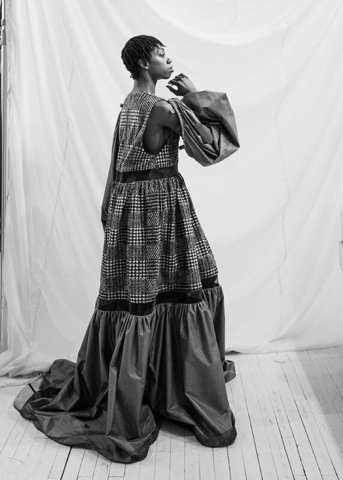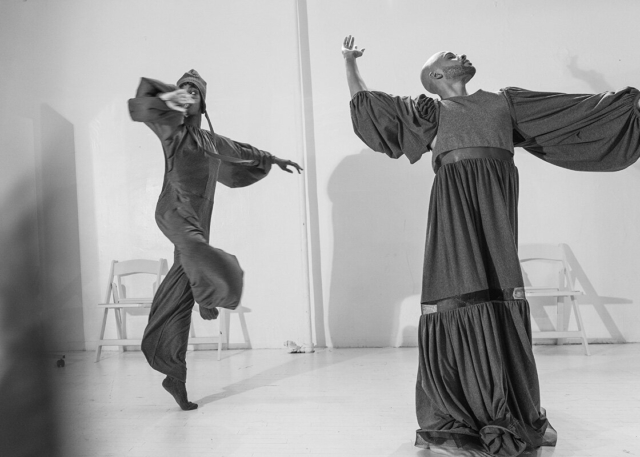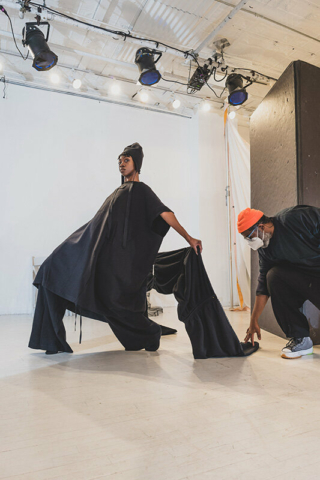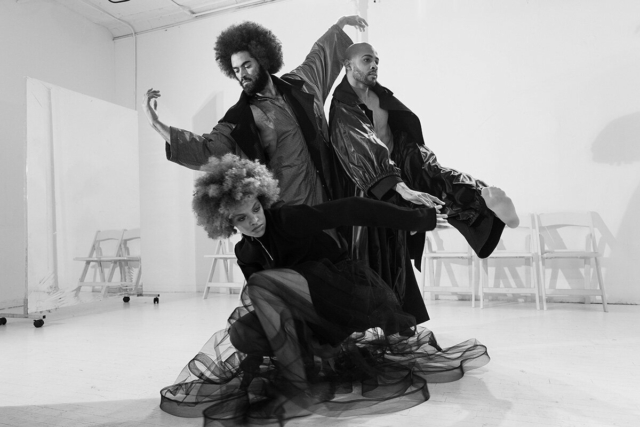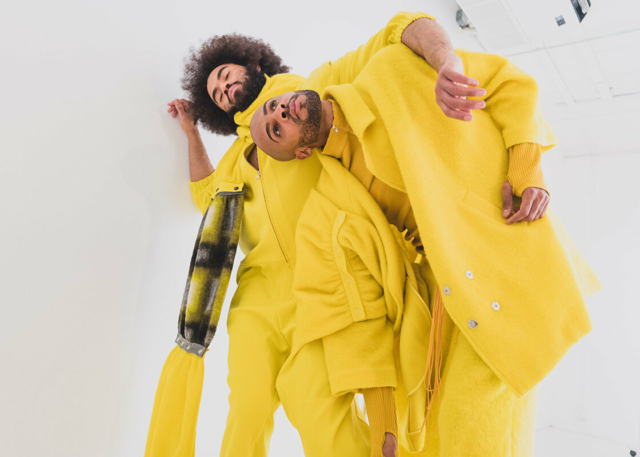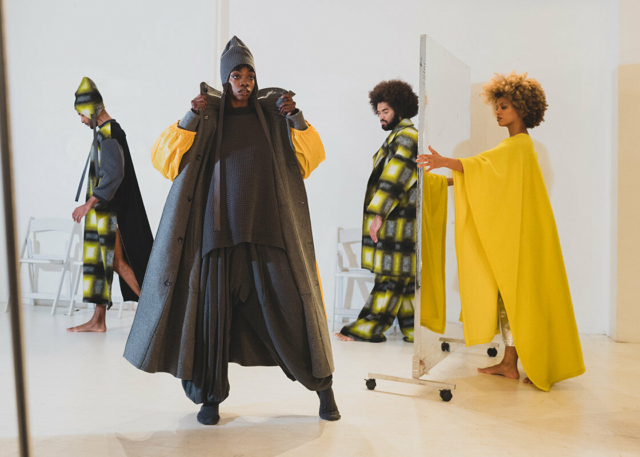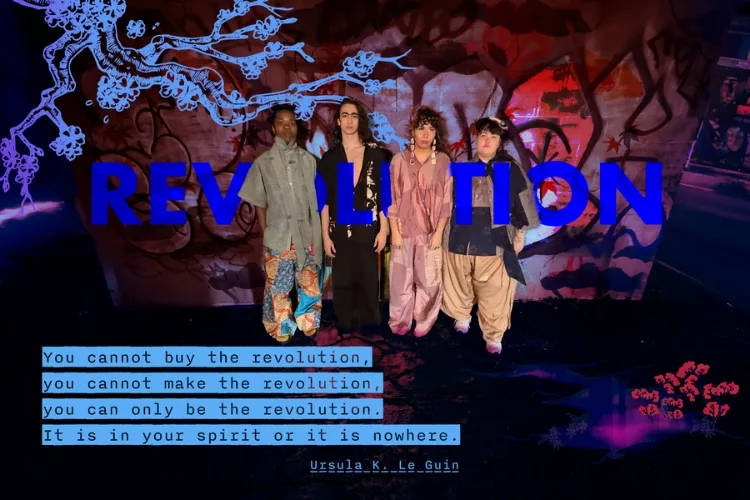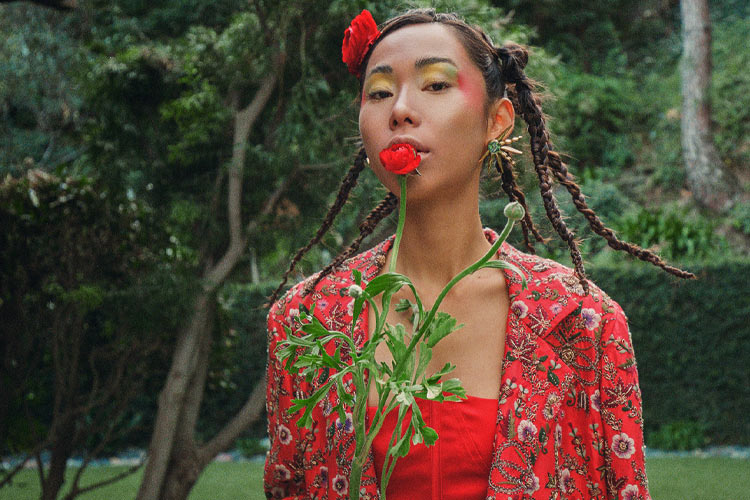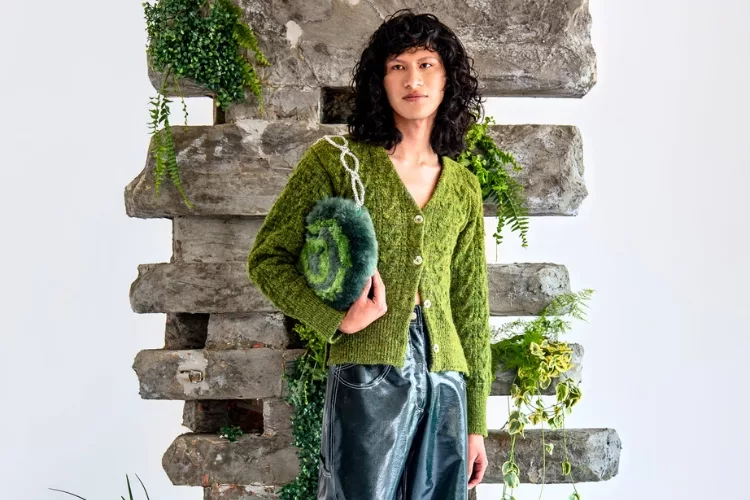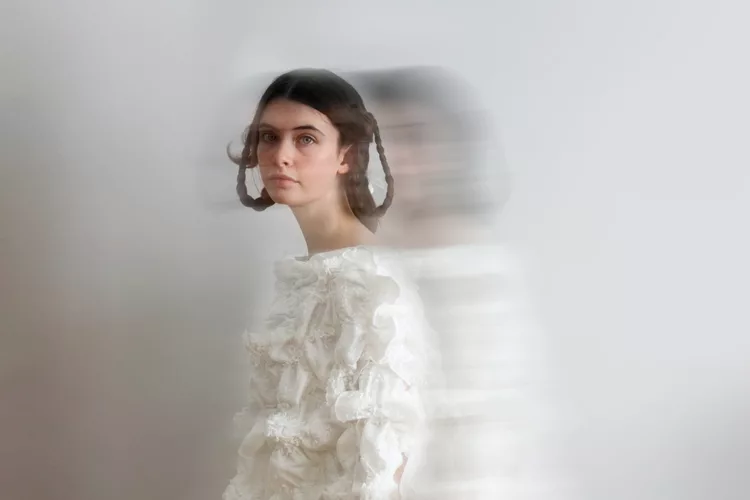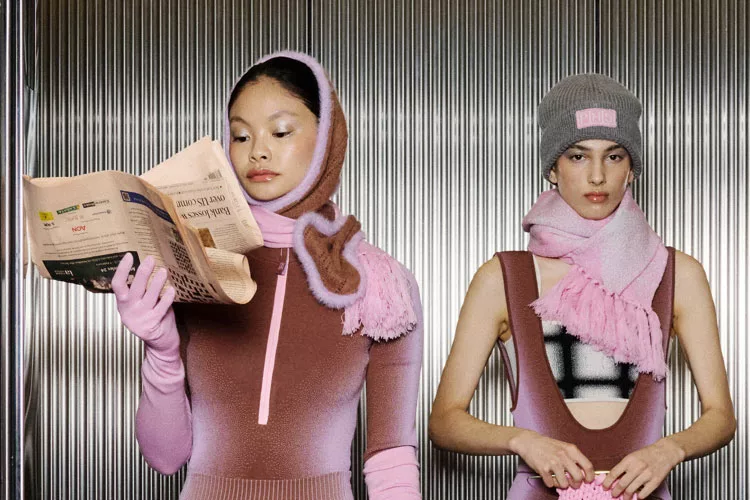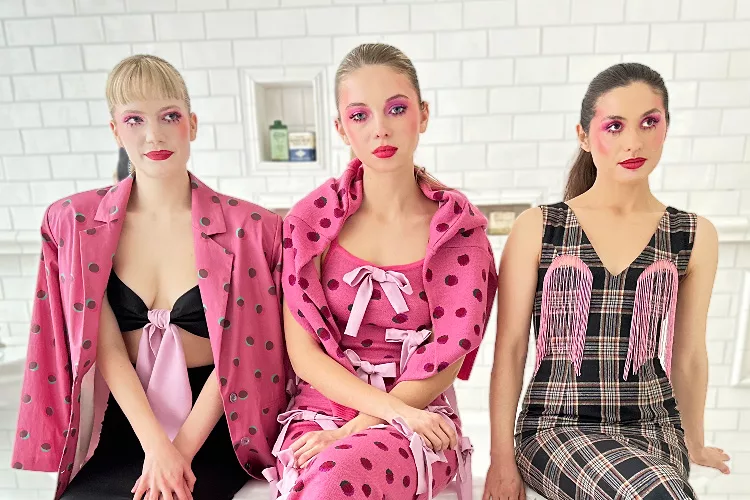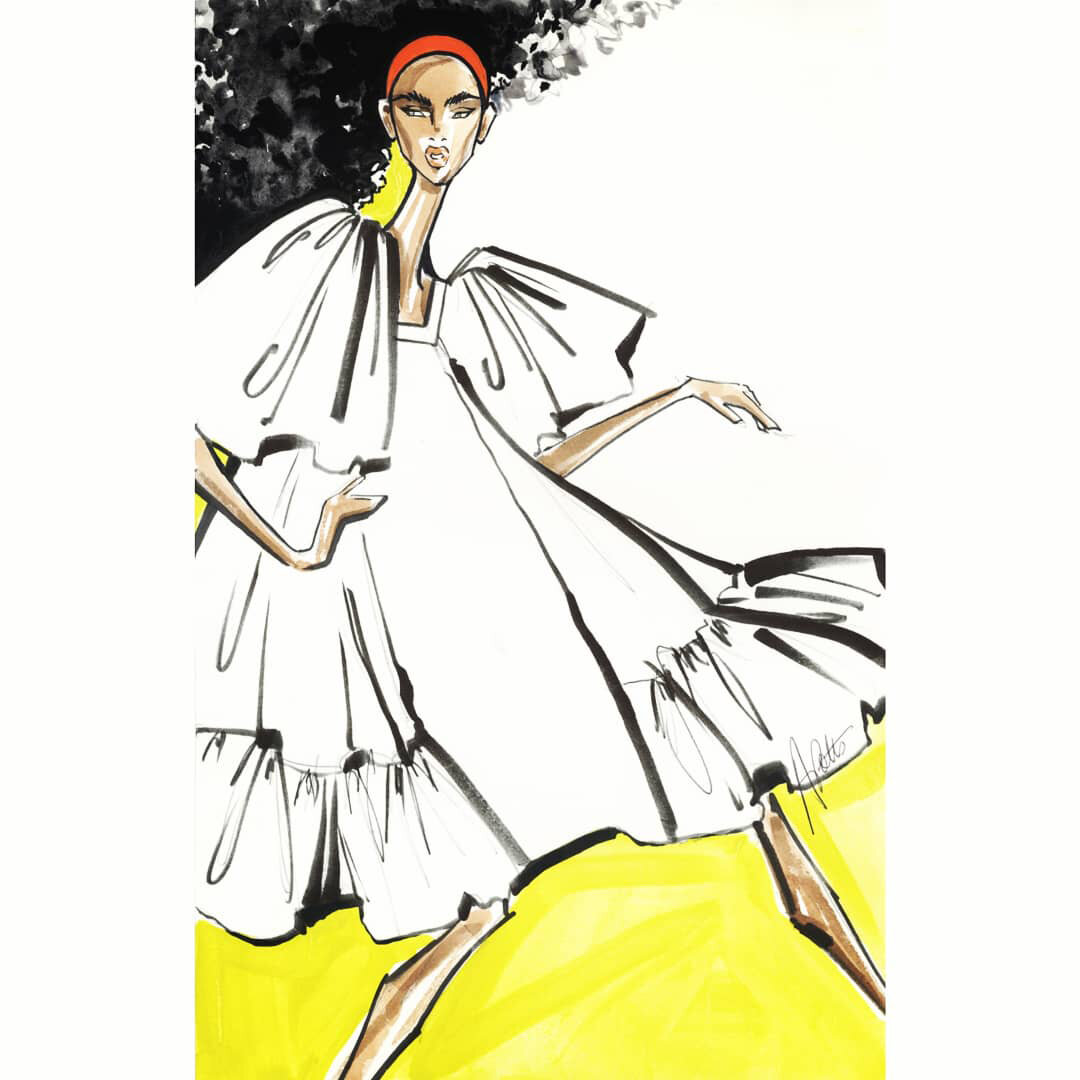
I want it to be this tool for connecting with people and building amazing relationships and creating together and then putting that out into the world.
–Aaron Potts on A.Potts
When we were reviewing the February NYFW collections A.Potts was the one that jumped out to us. The volume and shapes made me feel like they were clothes that could protect me during the pandemic while simultaneously being garments that one could make a grand entrance in and really be noticed. This juxtaposition intrigued me and I wanted to know more. Aaron graciously agreed to sit down with us to discuss his collection. But first we had to touch on Detroit…
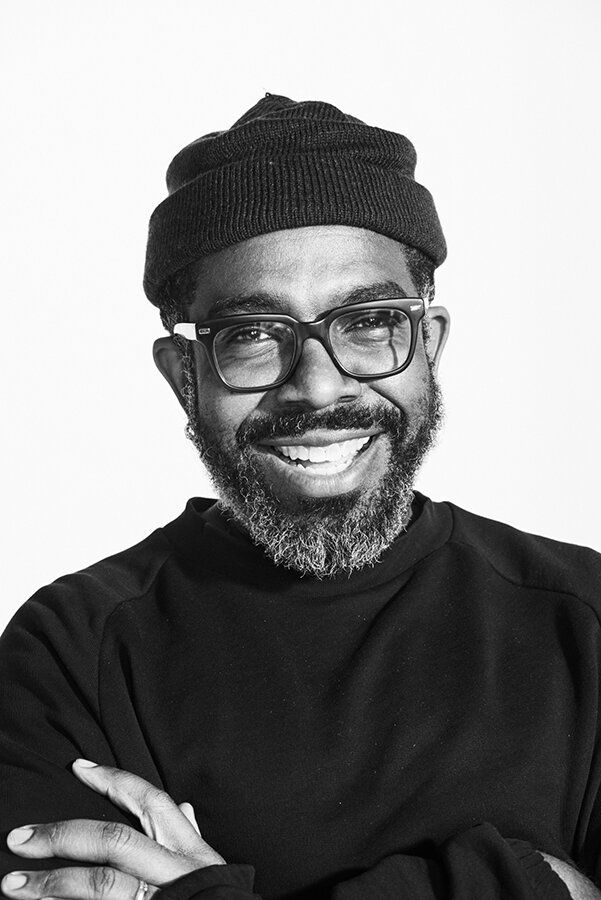
No Kill Mag: Full disclosure: we have a lot of family in/around Detroit and got excited that you are from there. How did that shape you?
Aaron: I went to Lutheran School from K-8, a very small school in the suburbs, and then for high school I was thrown into the Detroit Public School system, but I went to Renaissance High School and that’s where I found fashion.
I was taking a journalism class and I felt the teacher wasn’t being fair with my grade and the only class that was open was this fashion design and illustration class so I was like, you know what? Let me transfer. And I came in on week two and the students were finishing up a project, finding your target customer, and you know everybody had Diana Ross and Aretha Franklin all the local greats, and Anita Baker at the time, and they were doing these presentations and I’m sitting there and it was literally like an epiphany. It felt like in the movies when you hear a voice and a light comes on and it was like this. is. it.
I felt like I found what my purpose in life was –I actually felt like oh my god this is it, this is my thing–so I will forever be grateful to Renaissance and my amazing art teacher who was really like a surrogate mom to me. You know, my father died when I was in high school and she really stepped in and took the reins of helping me figure out college and helping me acclimate –especially as a gay kid. I never had that discussion with her but she was very protective of me and it was a really great experience.
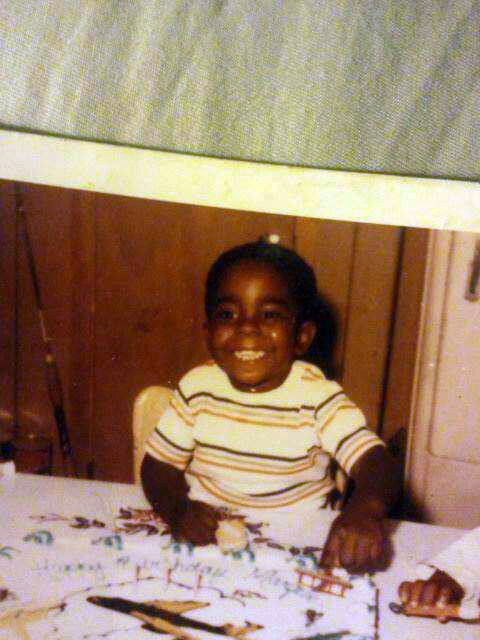
How did your parents feel about you wanting to be a designer?
Well you know actually today is my mom’s birthday, and she passed on when I was 11, and my dad died when I was 16. My mom would’ve been 88 today,
We’re so sorry!
Yes, but because the Universe has a way of making things how they should be and I think because my parents were older, I grew up a very mature child. I knew how to take care of myself, I washed the dishes, cleaned the house, I knew how to do laundry. My dad was a carpenter so I knew how to do the very practical things of growing up.
Like my dad, he was very adamant about me being independent, so I was the one who balanced our check book –starting at 12 I balanced the book, wrote the check, sent off the bills, I would do all of that. But back to the question of how he felt about me being a designer: my dad was born in 1919 so he was old school, so I was kind of afraid, how is he going to take to me doing art? This is a carpenter army guy from the South –he was literally born a sharecropper– and he loved that I was doing art. He was so proud and people would come over and he would go find artwork to show them. It was great. But they prepped me.
My mom, she was 1 of 5 girls, and my dad’s closest sister also lived in Detroit so I kind of ended up with 5 moms. I was lucky. I was very lucky I had an amazing community of family and close friends around me from the time my mom passed and through the time when my dad died I was kind of set on a path.

How was it coming to New York from that sort of community?
I had never been to New York before I moved here.
I graduated high school and then had a month off and moved to New York for the summer to do the Parsons’ summer program before starting there in the fall. At the end of the summer program, I packed up everything, called a moving company, this is the days when you’d get a coupon out of the back of the Village Voice for free pick-up and delivery, and I was one of 5 other students, riding in the back of the truck illegally, headed to Brooklyn. When I came back to start school in September, I loaded up the storage unit into a taxi and headed back to the dorm.
That must’ve been some culture shock, but was it fun?
You know, it was a bit of a culture shock. Detroit is a big city but the thing was most black people in Detroit, their families are from the South. So I grew up in a way like growing up in the South –in the North. It was very friendly. We were all blue-collar families and very low key. We literally had to come in when the street lights came on. I grew up with the same kids on my block my entire life and their parents were like my parents. It was very old school in that way.
In Detroit I was illegally driving as a kid. My father taught me how to drive when I was ten and I’ve always been a big guy so my father would pick me up from school and I would drive us home from the time I was 11 years old. So when I got to New York I had to figure out the subways. At first I did not leave the Village. I look back and think I stayed in my little Village/Parsons/New School eight block radius because I was a little scared. But I got out of that real fast and yeah…it was a little daunting at first but I got used to it because I had to. This is a town where you got to sink or swim.
How important was going to Parsons for you, the people you met? Internships?
It was pivotal. Parsons at the time was so focused on illustration and presentation and I think that that’s been my calling card. People have always loved my illustrations so that was a huge benefit, I learned a lot there and still have friendships from there I’ve been able to maintain.
And the other thing is: I was hungry. So I was doing everything. I was interning, I was dressing every show, I remember the first Bryant Park shows, I was dressing shows there, I dressed Megan Douglas in the Isaac Mizrahi show – I still keep in touch with her today, and Donna Karan was my senior critic and she got me a job at DKNY as a paid intern. So all of that stuff was huge for me. I interned with Tracy Reese a lot, every show she did. I sneaked into every show because I lived and breathed it so…
We had prepared “Have you always wanted to design your own line?” But now that seems silly. Of course you did!
You know, that’s actually not a bad question because I think every designer in the back of their mind thinks they want to do that but I’ll say there were a number of years where I was very comfortable working for other people. I’ve had some really great jobs with really great people. For example, I worked at Ellen Tracy when it was a privately owned company. That was an amazing experience. I was working with the man who created Ellen Tracy in the ’50s and his wife who was the first designer for the brand. We had the most extraordinary resources. I mean from a man that only sewed leather to a lady who would do embroideries, so it was really old school 7th Avenue fashion. That kind of job spoils you, you know.
Those days are gone so it’s easier to say, “You know what? I want to do my own thing because I need to create not just the clothes but the environment that I want to be in every day.” I want to be in an environment that is about creativity and collaboration and having fun and using fashion as a tool to say something. Not just to hype people’s egos or give people a false sense of self value.
I really want my process of creating fashion to feed me and the people that I work with, and then I want the product to speak to someone on a level that is deeper than just taking a picture on Instagram and trying to get a bunch of likes.
That’s what I want the clothes to be some sort of a conduit for people to be themselves, find themselves, learn to love themselves more, go deeper into themselves, that’s how I want to use fashion.
I love that. Creating community and using fashion on a deeper level… that’s great. Talk to us a little bit about your thoughts –I almost hate to use the word sustainability, but I’m going to touch on that because the message lately is “people shouldn’t be making more”. But the reality is we love beautiful things, that’s not going away, we just need things more conscientiously made.
It’s something that I am consciously aware of and working on. I didn’t start in a 100% sustainable way. I’m in this transition of production so now is a perfect time for me to really start addressing that because I won’t have to undo a lot of negative practices.
And my next production is starting in the realm of drops where people pre-order. That way I only make what is actually ordered. I’m not wasting money or materials while projecting some big numbers and then praying that someone’s going to buy it. And then it’s sitting somewhere in a warehouse which is eating up electricity and you’re paying for all of that. This way we can make what is ordered and ship it and be done.
Made to order / direct to consumer – to us that is the future of fashion. That is the way to be the most sustainable because you’re not over producing.
The biggest hurdle for that is actually a lot of the factories have astronomical minimums. Like I have to make 250 of one thing in one color? Fine! I’m going to make one thing for this season! (laughs)
That’s one of the issues. So we’re trying to find some smart ways around some of those things. Now more factories are getting on board with producing sustainably and we can actually have those conversations.
But I think what a lot of people don’t understand is, consumers complain about waste and fair labor practices but then still shop at all the fast fashion places. So the customer is going to have to understand that to be sustainable there is a value added to it that sometimes has to be passed onto the customer. We’re at a stage where there are some consumers who do understand that things might right now cost a little more. But the more we dig into this whole sustainable conversation and actuating it in production and development, those prices will actually start to go down. But people have to get on board with us.
Right. That was a big impetus for us to start No Kill Magazine. We’re still brand new too but I love fashion, probably as much as you do but I’m not a designer and once you, –everybody’s seen the True Cost from 2015 now– but once you understand the effects of fast fashion, then you can say it’s okay to have to save a little bit of money to buy something. Something that was ethically made and that you keep longer.
Yes! and that’s been my thing about how I design. I don’t design for things to be disposable. I really believe in designing clothes that people can keep. And you build on top of your wardrobe.
I really don’t like trends. I don’t like developing my process through a lens of trends because to a large degree that automatically makes it throw away. Because next season’s trends are going to be different.
I don’t want people to throw these clothes away. I want people to use them in different ways so I design them to be versatile. One day it’s big and loose. The next day you throw a belt on it. You can wear with Birkenstocks today and then tomorrow pair with boots for a business meeting.
Are there fabrics that you prefer or that you’re really drawn to working with?
I love a crisp structured cotton. You can make a great tailored shirt, you can make an oversized shirt, you can make a shirt dress, you can make a tunic, you really can make anything out of it. And I like the simplicity of that.
And then I also love what I call a parachute fabric. For me it’s a cotton base but blended with a nylon or some sort of synthetic to give it that modern hand. Every body type can wear those pieces because they make clothes that feel airy. And I also love, and this is probably from my days of working with Donna Karan, I a sculptural stretchy woven fabric. that becomes something you can sculpt. You can make something sleek, you can make something with volume.
And I’ll give you a secret. I don’t buy from menswear mills. I buy from women’s mills because there’s more creativity and exploration. Then I apply those things to my genderless collections and the guys wear the same stuff. It’s actually more interesting.
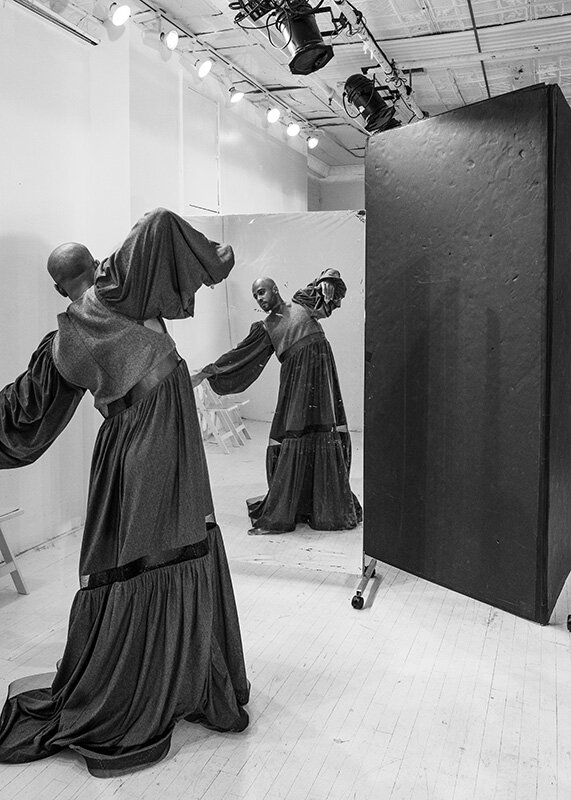
I’m really interested in how you started working with Alvin Ailey.
That was a total fluke. We were in quarantine so I was working remotely and I had a lot of downtime. I was watching old music videos, and I came across this video of Jody Watley “Still a Thrill”. I think this is just the most brilliant under rated music videos.
It was shot in Paris in some old theater. It was just her in this huge open space with the inner workings of big wheels and cogs. The light and shadows were so dramatic because it was in black and white. It was just like a zillion tones of grey. So that’s where the color and this whole emphasis of light and shadow came from.
I work with an artistic director who helps me actualize my ideas. We were talking about the video and that it is also about Jody’s dancing not just her singing. She actually started out as a Soul Train dancer when she was 16 years old and that’s how she was discovered.
She was an amazing dancer. And apparently, she didn’t choreograph anything in this video – she did it all off the cuff and I felt that was a really important element – we actually wanted to reach out to Jody Watley but we were all in quarantine so we figured she couldn’t travel.
So we were like “how do we take this thing of movement and twist it”? I reached out to an old friend who is a composer and a Professor at Juilliard. I said “Ok I need you to look through your network and find me some dancers.”
I ended up connecting with Yannick Lebrun who is the principal male dancer at Alvin Ailey. I sent him my mood boards and some sketches. He loved it and came on board as our director of movement.
He cast the other dancers. Two current Ailey company dancers and one former. I told him, “I trust that you can take this and I want you to do your interpretation of what this is”. The day that we filmed it was like a religious experience.
These people, the dancers, are so aware their angles, they know how the clothes move – it was perfect. But then at the end we said “Go for it! Don’t think about the camera, don’t think about fashion, just feel what you’re feeling”. And they did, they went for it.
By the end, everyone was in tears. I get chills thinking about it. I’ve become friends with all of those dancers. Yannick just did a photo shoot using some of my pieces as well.
I want it to be this tool for connecting with people. To build amazing relationships and create together and then put that out into the world. To me it has to be a tool of something bigger than just some clothes.
And late the night before we filmed Yannick and I were talking. He said “Aaron, it’s Black History Month. You’re a black designer. All of the dancers are from different parts of the world but we’re all black and we’re filming this and you’re going to release this during Fashion Week–during Black History Month. This is such an amazing moment”
And I had not thought of it in that way and it just kind of blew me away and I’m so grateful that I reached out to him. When I have these experiences I feel like I’m growing into the fullest possibility of who I can be. And I need other people, I need these connections to do that. And that’s what A.Potts is to me. Again, it’s not just about clothes. All of us have talents given to us so we can share them with the world. But we also can use them to find ourselves. And that’s what I want this to be a tool for.
[this interview has been modified for brevity]
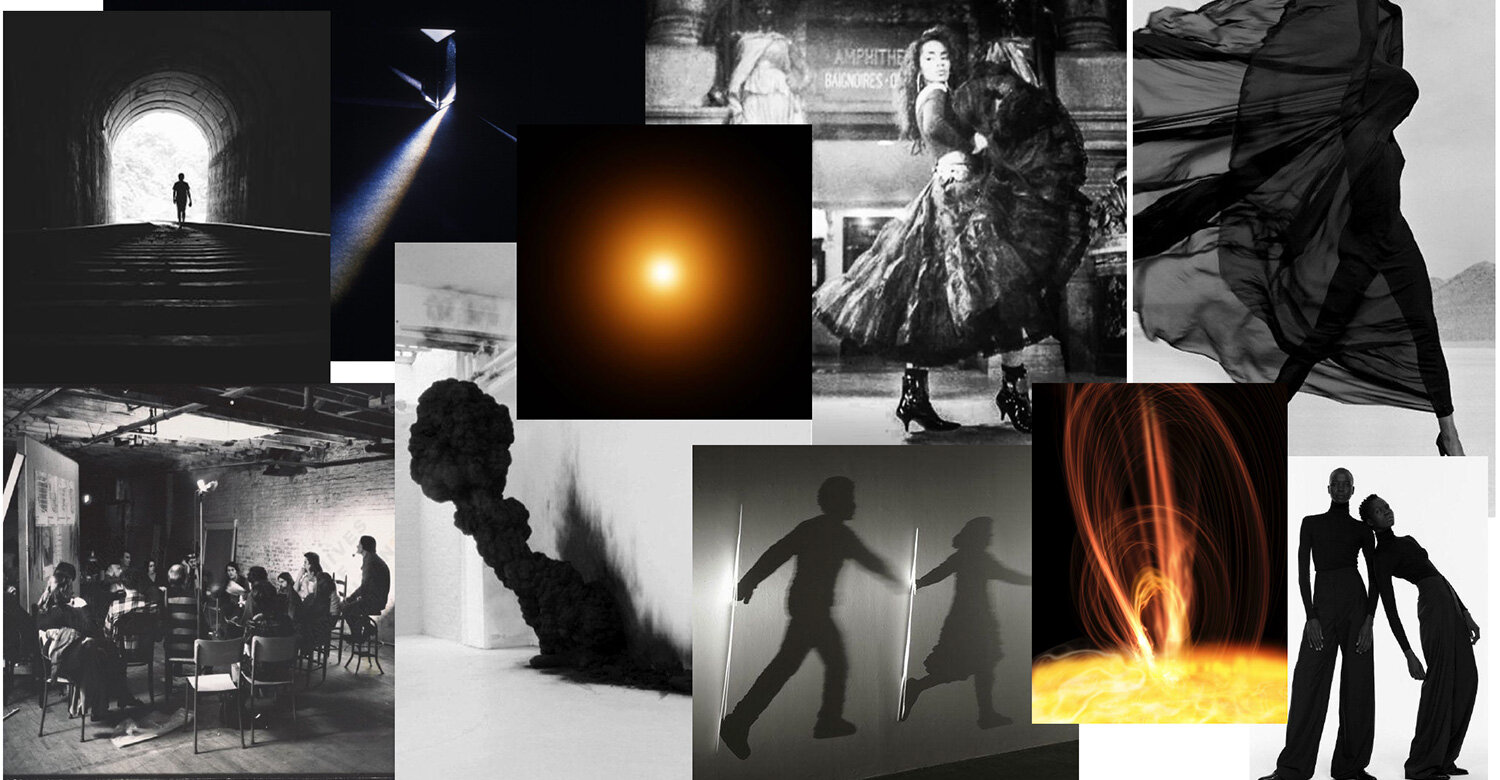
Aaron’s Favorite Things
Book
Island Beneath The Sea by Isabel Allende – stunning fictional history of the slave trade in Haiti, the Haitian Revolution and French slavery in Louisiana. Brilliant – I sooooo want a movie adaptation.
Movie/Series
Pose – I’ve followed the ball scene for 20+ years having attended countless functions as a spectator. I’m obsessed with Dominique Jackson.
Creative Inspiration
Black history
Food
My Aunt Johnnie’s homemade chili and her cornbread dressin’
Trend that you like
Self-discovery
Trend that you hate
I have two: Guys shaving 1/2″ deep into their front hairline; Heavy IG face beats….people are so pretty natural!
Quality in a human being
Humor….and COMPASSION
Person you admire
James Baldwin
Quote to live by
“Don’t start none, won’t be none…”
–Karen L Dunn and Katya Moorman
images courtesy Aaron Potts, photographs of collection courtesy and ©Marsha Lebedev Bernstein
RELATED Articles

